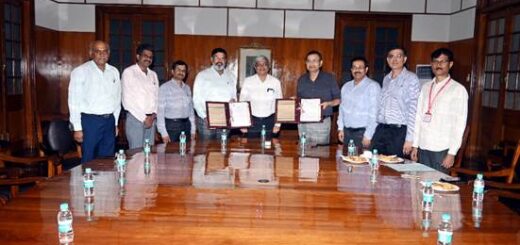Finding Common Ground: Plastic Recycling and Extended Producer Responsibility
by admin · Published · Updated
The 2023 Resource Recycling Conference in Orlando, Florida, brought together stakeholders in the plastics industry to discuss Extended Producer Responsibility (EPR) and its implications. While tensions were expected, the attendees were pleasantly surprised to witness a constructive dialogue that highlighted hope, progress, and respectful disagreement on issues such as film, chemical recycling, and labeling.
The session, titled “Plastic Tensions Within Extended Producer Responsibility,” featured a panel of experts:
- Kate Bailey, Chief Policy Officer at the Association of Plastic Recyclers.
- Anja Brandon, Associate Director of U.S. Plastics Policy at the Ocean Conservancy.
- Megan Daum, Vice President of Sustainability for American Beverage.
- Jennifer Ronk, Sustainability and Advocacy Manager at Dow.
Dylan de Thomas, Vice President of Public Policy and Government Affairs at The Recycling Partnership, moderated the discussion.
The Value of EPR
Kate Bailey emphasized the transformative potential of EPR, describing it as the solution to the financial challenges that have plagued recycling efforts for years. She pointed out that EPR offers a consistent, coordinated, and ongoing funding mechanism for recycling, addressing a long-standing problem.
Anja Brandon, viewing EPR through the lens of the ocean plastic pollution crisis, highlighted its potential to drive improved environmental outcomes. She stressed the need for a system-change policy to tackle the root causes of plastic pollution.
Jennifer Ronk, representing Dow, expressed support for EPR when it is fair, flexible, and effectively solves the recycling problem. She emphasized the importance of putting more materials into the recycling system and ensuring that it functions efficiently, benefiting both producers and consumers.
Megan Daum underscored the need for strong recycling systems, emphasizing that EPR shifts the funding responsibility from municipalities and taxpayers to producers, creating a secure source of funding for all aspects of recycling.
Mixing EPR and Other Goals
EPR legislation often incorporates additional goals, such as source reduction, reuse, bans on additives, or mandates for recycled content. Panelists had varying opinions on whether it’s better to have a single, inclusive bill or address each issue separately.
Jennifer Ronk favored simplicity, believing that simpler legislation can accelerate improvements in the recycling system. However, Anja Brandon argued that additional features like source reduction and design criteria complement recycling efforts, creating a holistic approach to addressing plastic pollution.
Megan Daum cautioned that combining multiple goals can make it challenging to pass bills, referencing Washington’s recent failure to pass the WRAP Act, which combined EPR for packaging with a deposit return system.
The Labeling Question
Labeling proved to be a complex issue. Kate Bailey suggested that the resin identification code (RIC) could coexist with better recycling labeling. Jennifer Ronk and Anja Brandon proposed alternatives like QR codes and advocated for EPR as a means to transition away from labeling by requiring reusable, recyclable, or compostable items.
Bailey acknowledged the complexity of changing labeling practices across state lines, highlighting the need for a coordinated approach.
Chemical Recycling Tensions
While acknowledging the need for innovation and new recycling technologies, the panelists cautioned against fully embracing unproven methods. Megan Daum stressed the importance of ensuring that any processing method demonstrates its environmental impact, market strength, and material purchase capabilities at scale.
Kate Bailey suggested that chemical recycling might be best suited for plastic durables, as a significant portion of plastics is used for non-packaging applications. She also praised Oregon’s EPR bill for establishing clear parameters for new technologies, striking a balance between innovation and established practices.
Anja Brandon emphasized that EPR’s data collection and transparency benefits would facilitate the evaluation of new technologies in the future.
A Call for Collaboration
The panelists concluded by emphasizing the need for collaboration among all stakeholders. They celebrated the progress made in EPR discussions and noted that, despite tensions, there was a remarkable degree of agreement among participants. Kate Bailey aptly summed up the sentiment: “We more agree than we disagree.”
In a world grappling with plastic pollution, this collaborative spirit offers hope for effective solutions and a sustainable future.



